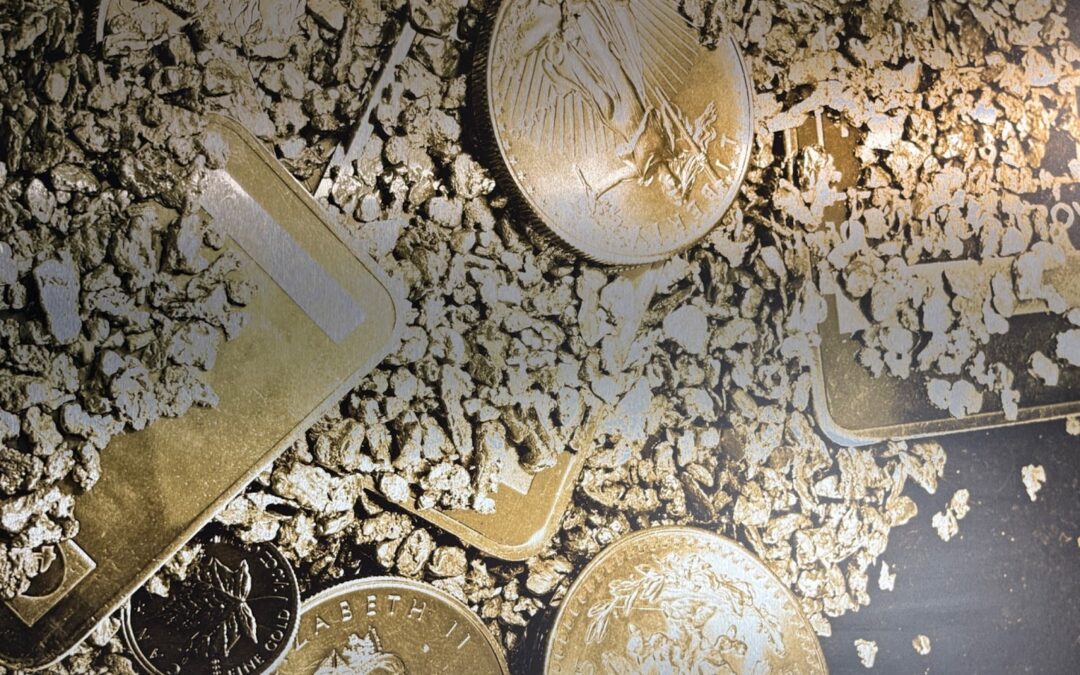Understanding the factors that influence the price of gold is crutial before making an investment in the precious metal. Equally important is to be aware of the key differences in the supply and demand of gold compared to other investments such as commodities, stocks and bonds.
Another factor to keep in mind; gold is not the only precious metal to consider when making this type of investment. Silver, Platinum and Palladium are also highly sought-after as investment vehicles, offer similar fundamentals to gold, but each have their own unique characteristics as an investment.
Factors Influencing the Price of Gold Bullion
The value in a gold coin or gold bullion is found in its precious metal content. While gold is pretty to look at in just about any form, when sought after for investment purposes its aesthetic appeal is not usually a consideration. Because of this, the value of gold bullion is tied directly to the market price for gold, and will fluctuate as the market moves, just like stocks, bonds and commodities.
How to Measure the Price of Gold
When quoting the price of gold, most business reports will show the price per troy ounce in US dollars. If you are following the market from outside the US, make sure to convert this price into your home currency, and know that one troy ounce is equivalent to about 31.1 grams.
Also note that the price quoted on the market is always for pure gold. Most jewellery is much less than pure (usually between 40-75%), bullion and coins however, are usually fairly high purities (above 90%).
With an understanding of the mechanics behind the price of a physical sample of gold, you can start to look at the market forces that cause the wide daily swings in price. They are listed in order of their impact on the daily price of gold.
1. Macroeconomic Data
By far the most influential metric on the price of gold is the daily economic information coming out of the worlds markets. Gold has historically always been a “safe haven” type of investment. Like real estate and cash, it is a place to put your money if things aren’t looking good elsewhere. When money is pulled out of the stock market it generally flows towards these types of investments, but in 2008 when the stock market and the real estate market experienced simultaneous crashes, gold seemed like the only safe play and, in turn, began its dramatic gains in price.
2. Inflation Pressure
Inflation is the theory that over time, the value of money will always go down as prices go up. While the average price of a house isn’t $40,000 like it was in 1975, the number of gold bars it would take to buy the same house is pretty consistent: $40,000 worth of gold in 1975 would be worth a little over $310,000 today.
This means that no matter what the market is for gold, in the long run it’s always better than holding cash without earning any interest on it. While gold doesn’t pay interest, its price does generally track the rate of inflation or better.
3. Supply and Demand of Gold
Supply and demand is the main drive of market pricing behind most commodities. While the gold price is much more complex than this basic formula, these factors do come in to play.
The supply of gold is largely dependent on its price, as the cost to mine it has become so high. It used to be quite easy to prospect and mine for gold, with plenty of stories from the gold rush of hitting the mother lode. Nowadays, it’s much more difficult to extract gold in large quantities and requires expensive equipment and technology. Also, since gold doesn’t really get “used up” or consumed the way other commodities do, there is always a large reserve of gold regardless of supply. So unlike most other commodities, the supply of gold will likely continue to be more reactive to its price than to have a direct impact on it.
The demand side is similarly consistent. As the price of gold drops, its demand in the use of jewellery increases (as jewellery is a discretionary spending item), but the investment demand for gold will generally drop as prices move on a downward trend. The reverse is true, of course if prices rise: jewellery demand for gold drops, and investment demand increases.
Future of Gold Prices
Look to the economy and the rate of inflation as the most likely indicators of gold price in the future. Another big recession or a sudden increase in the level of inflation could cause gold to make another big run up. Similarly, if things continue to improve in the global economy and inflation remains in check, gold prices will likely remain fairly stagnant and could even drop a little more.




